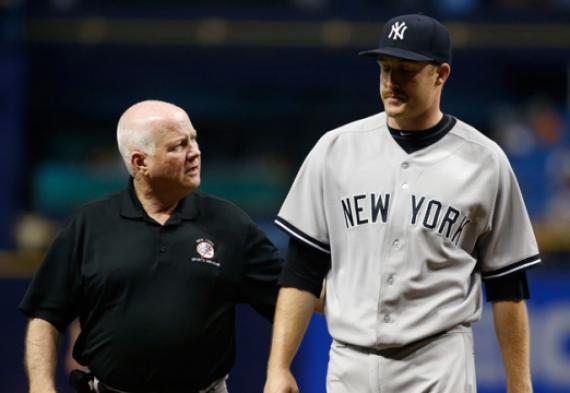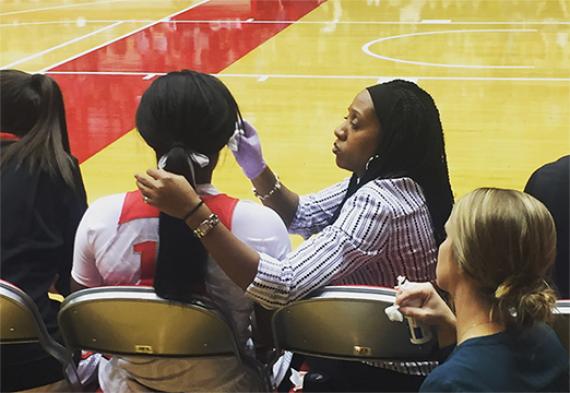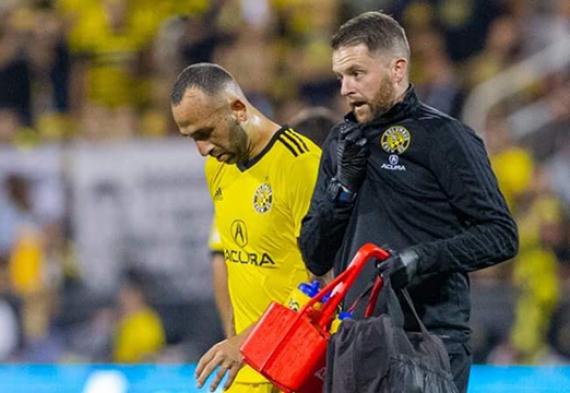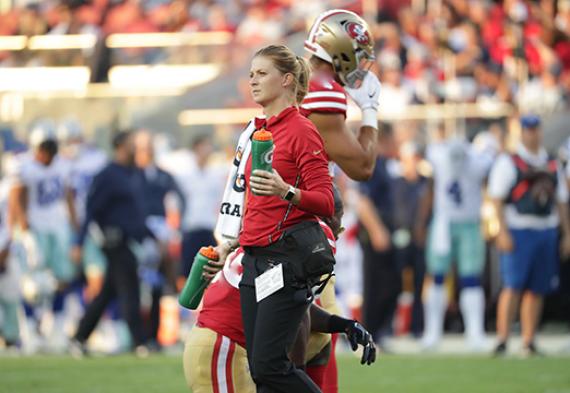
Hello Students and welcome to the NATA Student Leadership Committee’s first career explorations blog post! This month, we are exploring athletic trainers working in the professional sports setting. Read on to learn more about four professional sport athletic trainers, their different leagues, their daily lives and work operations, and tips on how you can one day be in their shoes.

Steve Donohue, LAT, ATC, New York Yankees Head Athletic Trainer
Steve Donohue LAT, ATC, has been the head athletic trainer with the New York Yankees for seven years, but has worked within the organization as a minor league athletic trainer and assistant athletic trainer for 34 years. He started in high school and college, interning with the New York Jets where he found his love for high-level athletics. Donohue said what he enjoys about the MLB is the continual challenge because “the seasons are marathons, not a sprint.” This requires him to be versatile as a clinician and meet his athletes at the high level they perform. The MLB, known for its long and grueling season, also brings along a different challenge from many sports. With 162 games, including 82 on the road, in addition to two preseason months, the MLB athletic trainer must manage many chronic injuries throughout the course of the year. In addition to his hard work, Donohue balances baseball with his supportive wife and two daughters who make it possible for him to live his dream.
What characteristics or traits do you think students should have, or should work on, if they want to join you in your high-level setting?
Communication is vital between staff members and also with and between the athletes. Students should have a continued love to learn and understand that there are always new techniques and modalities to learn and master. Lastly, students should have a passion for the profession; a passion to get athletes healthy again.

Chalisa Fonza, MS, LAT, ATC, Washington Mystics Head Athletic Trainer
Chalisa Fonza, MS, LAT, ATC, is the head athletic trainer for the WNBA’s Washington Mystics. Fonza returned back to pro-basketball after 18 seasons with Ohio State women’s basketball. She said her wide range of experiences and depth of different talents is what led her into this position with the Mystics. Her first desire to work in professional sports came from wanted to be the top of her craft, which naturally led her to want to work in professional sports, with the best of the best. In order for students to work in professional sports, Fonza said, “They need to be committed to their craft. A selfless desire to help others is key.” She said the job is a lot of hours – students need to give it their all. The WNBA has a shorter season so its athletes can also compete oversees, and end up playing between 9-11 months out of the year which creates a lot of chronic injuries. Also, the WNBA doesn’t have all of the luxuries of other professional sports. In addition to her athletic training duties, she is versatile and works to make transitions as seamless as possible to make a home for the athletes. When spending time away from basketball, Fonza is involved in other activities such as children organizations and church opportunities to help keep a work-life balance.
What advice do you have for students whose desire is to work in professional basketball?
Get experience! Be willing to learn from many different opportunities and take any chances you get. Allow yourself to try new things and not pigeon hole yourself. Also, be willing to learn from everyone and every chance you have, there are many ways to do things!

Chris Shenberger, MS, LAT, ATC, Columbus Crew SC Head Athletic Trainer
Chris Shenberger, MS, LAT, ATC, is the head athletic trainer for the MLS’s Columbus Crew SC. Shenberger’s background in soccer began with an internship with the Crew as an undergrad at a Division III university in Columbus. He fell in love with professional soccer during his time there, then continued working within soccer with U.S. youth national teams while gaining his master’s degree. After switching from collegiate soccer at Northwestern University to the Crew, Shenberger found the clinical challenge of professional sports exciting and loved the ability to combine it with soccer. One difference with the MLS is the very culturally diverse patient population. Shenberger said the team has players from nine countries, which brings a large mix of languages, religions, backgrounds and cultures that he must be mindful of as a clinician. Outside of the long season and hours, Shenberger said being able to separate from work is important. “Come in and be the best clinician you can, but be able to leave and have hobbies and a life outside of work,” he said. “Maximize that time.”
What characteristics or traits do you think students should have, or should work on, if they want to join you in your high-level setting?
Professionals in professional sports need flexibility, with schedules, life and other people, alongside a continued desire to learn and be at the fore front of athletic training. Also, being a team player and communicating effectively is essential.

Ashley McLendon, MS, ATC – NFL San Francisco 49ers Seasonal Athletic Training Intern
Ashley McLendon, MS, ATC, is currently a seasonal athletic training intern for the NFL’s San Francisco 49ers. McLendon had the opportunity to work with a range of athletes while attaining her master’s degree. She had rotations ranging from the high school level to Division I college settings. She also completed a summer internship with the 49ers. It was through her internship and clinical rotations that she knew she wanted to work with professional athletes moving forward.
What does a normal day look like for you?
A normal day is the same as any other clinic, but we only have one sport to work with and we have them all daylong. We have treatments and rehabilitation, field set up, taping, practice and post-practice treatments. Our days start before the sunrises and sometimes go till after the sun sets. Then there are travel days and game days where we get to see the players hard work pay off on the field.
What makes being an athletic trainer in the NFL special? What are you favorite and least favorite parts?
This is an opportunity to work with the highest level of athletes. That is humbling and, at the same time, sometimes daunting. You have to take yourself seriously and understand where you are. There are cameras watching at all times, therefore you must bring your “A” game every day, as you should in any setting. My favorite part is that the athletes truly care about their bodies and are highly committed to your therapeutic programs. My least enjoyable part is the extra-long days during camp and late-night arrivals from games.
As you can see, working in professional sports requires long hours, strong clinical skills and a continued desire to grow at your craft. While this is a lot a takes sacrifice, if you have the unending passion, dedication and work ethic required to function at this level, then you, too, can work at the top tiers of athletics.





